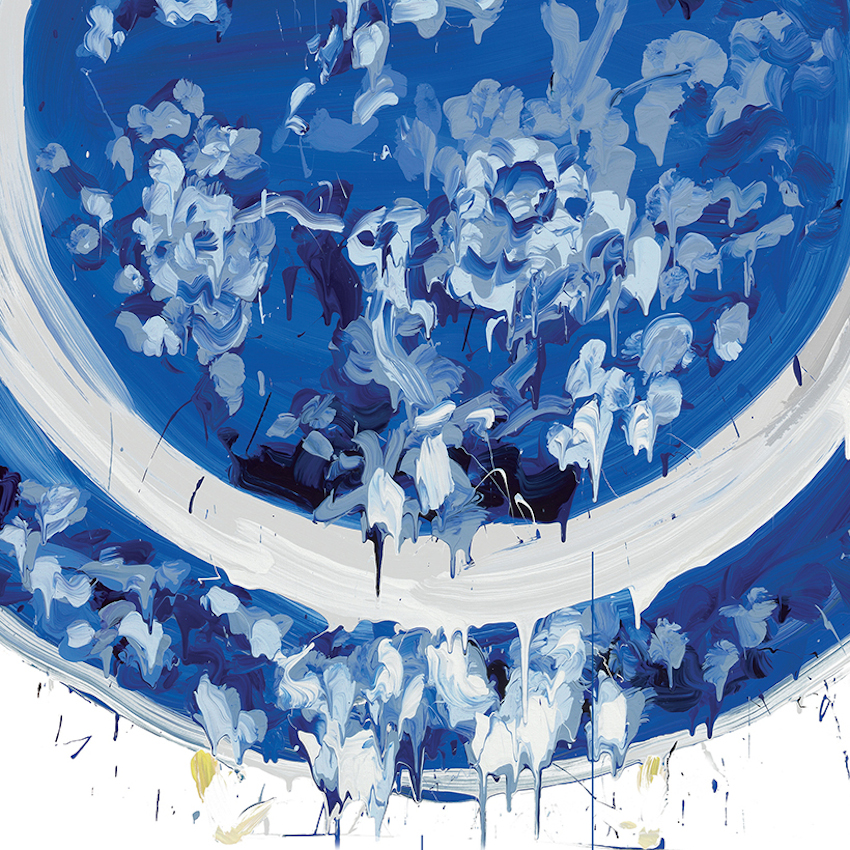We are extremely grateful to Fondation Bernardaud for allowing us to make their catalogs available to our members. Today My Blue China (2015) and Watts Up (2014) are available in cfile.library. If you are already a member view the catalog in cfile.library, or begin your 14-day free trial.
Click to Download your FREE “My Blue China”
My Blue China: La Mondialisation en Bleu et Blanc
de Verneuil, Laurent
Paris: Fondation Bernardaud, 2o15
French, English translation
40 Pages
Last week we dove into to Delftware head first, and this week we remain in the blue and white realm, but with a twist. The exhibition My Blue China explores the cultural and historical significance of blue and white porcelain wares by bringing together thirteen international artists who have ties to this color combo. The exhibition is a crucial coming together of contemporary art and history. I say that because of the many, many times I gazed at my grandmother’s shelves of pottery and wondered, what is the deal with blue and white pottery?
When blue and white porcelain was introduced to Europe by the Portuguese in the 16th Century, the Europeans couldn’t get enough. As a result, the French, Dutch, British, Germans, Austrians, and Italians were all radically influenced by these wares and tried their hand at replicating the style. In the end, each nation created something entirely different that withstood the test of time: Sèvres, Delft, Wedgwood, Meissen, majolica… and more.
The particular British adaptation popularized the Willow Pattern, which is well known today. “Manufactured in the 18th Century, this purely Western adaptation is a far cry from the Chinese style, at best a pale imitation and at worst a distortion,” explains the catalog essayist Laurent de Verneuil.

Ann Agee, Gross Domestic Product, 2010, glazed porcelain, steel armature
Each of the thirteen renowned artists in the show is given a two page spread in the catalog, and several of them stand out. British artist Barnaby Barford tells the “tragic tale” of the two-hundred year old Willow Pattern in his work Conversation Piece. He sets the scene: a dining table with two place settings, and most importantly two white plates. Barford projects a written version of the story onto one plate, and an animated version onto the other. Of course, this gives the couple having dinner something to talk about, as if the story and the conversation is what’s for dinner.
Brendan Tang’s work titled Manga Ormolu refers to certain 18th Century materials like bronze that were used to reinvent blue and white wares into something more regal to suit European aristocracy. “Tang’s sculptures go back to the earliest production of blue and white, playing with the rich and varied history of these objects, and how they relate to appropriation, imitation, and even propaganda.” The piece itself is a smashing together of two china vases; at the place where they meet, the clay wrinkles like folds of skin (this is the manga part). Though these vases look identical, we imagine that one might be Chinese and the other French. Tang is conceptualizing these vases as identical people of different national backgrounds being combined to make one thing–a comment on assimilation.
Click to Download your FREE “My Blue China”
“Her migration and transplantation to the English-speaking former colony [Canada] gave her a feeling of being displaced and constantly challenged her sense of identity. Culture shock is key theme in her work. This intercultural experience fits into a broader cultural phenomenon of cultural borrowing and interaction, whereby different nationalities and cultures interpenetrate and blend to form new interstitial identities.” -Laurent de Verneuil.
Today My Blue China (2015) and Watts Up (2014) are available in cfile.library. If you are already a member view the catalog in cfile.library, or begin your 14-day free trial.





Add your valued opinion to this post.